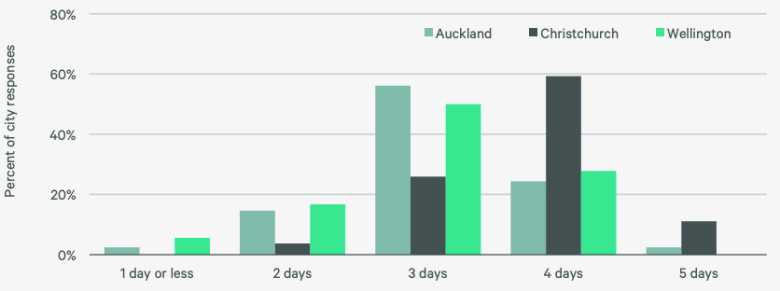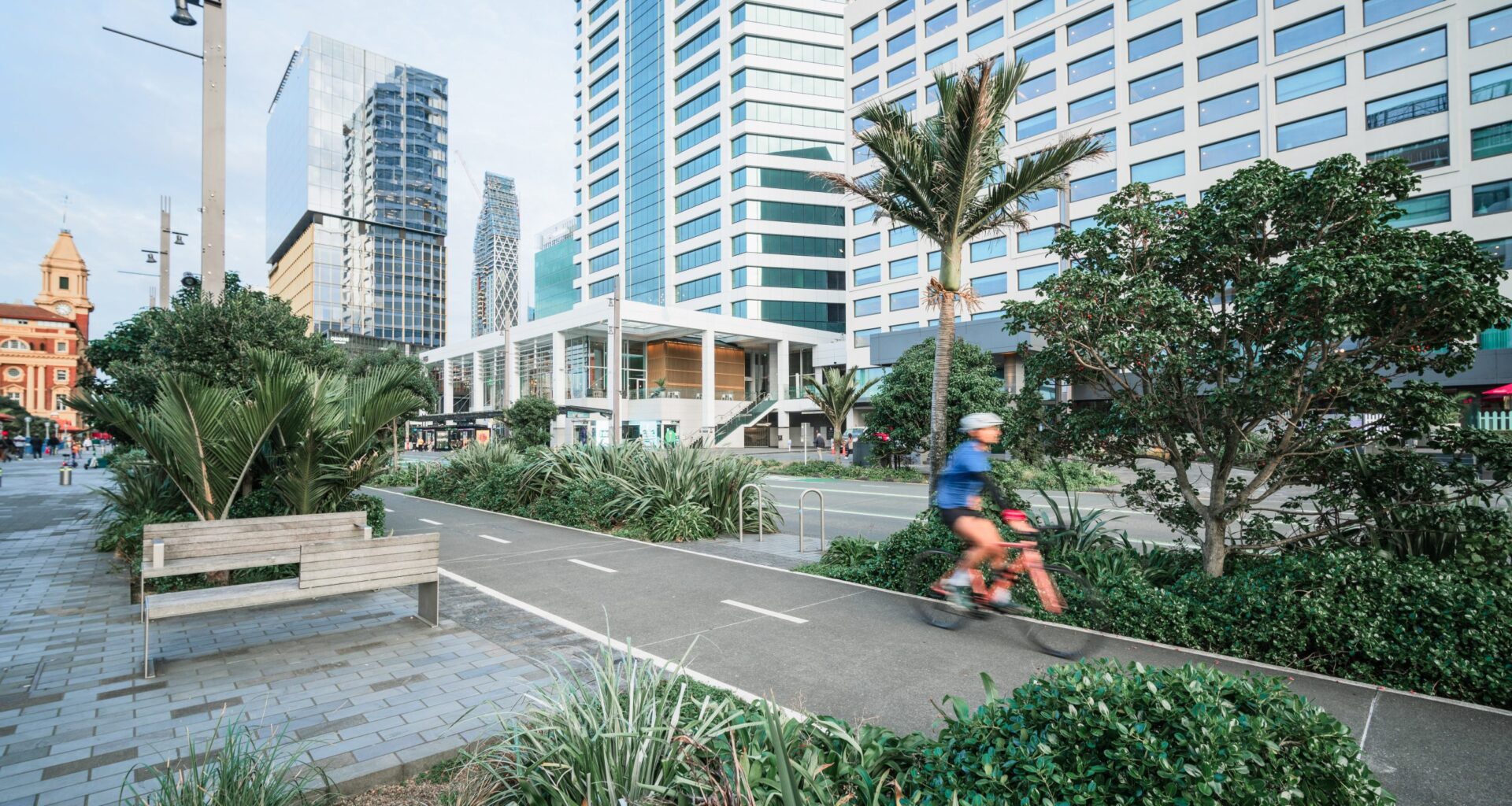Employers are increasingly wielding the power in determining how often their teams must be in the office but a gap remains between expected and actual attendance, new CBRE data shows.
Just 11 percent of employers surveyed have formal consequences for non-compliant workers, or formally link attendance with incentives like bonuses, suggesting that in many cases little is being done to close the gap between bosses’ ideals and their workers’ schedules.
Kirstin Cooper, CBRE’s associate director of workplace consulting, says she is hearing the word mandate more often – even if there is a lack of follow through. The crackdown on office attendance comes as the unemployment rate sits at 5.2 percent – the highest it’s been since the pandemic.
CBRE’s New Zealand Office Occupier Sentiment Survey illustrates how businesses are fine-tuning hybrid working and the impact this is having on weekly in-office days and office utilisation.
“What we saw come through as a key theme in this year’s survey was a shift in focus, it’s really employers now who are dictating how often people come into the office. This is definitely a change from what we saw back in 2023 and even a change from last year,” Cooper says.
Speaking to how the jobs market plays into workforce power balances, she adds: “Attracting and retaining talent is one of the biggest drivers for organisations supporting hybrid working in the first place.
“I guess when organisations feel a little more confident that they can perhaps increase attendance while still attracting and retaining people – whether that’s based on the employment market or not – there is potentially more confidence to be able to do that.”
Survey results show office attendance is gaining ground. The national average for a full-time worker’s time spent in the office sits at 3.3 days, unchanged from 2024 but up from 3.2 in 2023. Office utilisation – the percentage of office space occupied during a typical work week – is 64 percent, having ticked up from last year’s 62 percent.
CBRE surveys from across the US and Asia Pacific regions show New Zealand’s actual office attendance is ahead of Australia’s (2.8 days) and the US (2.9 days), and also exceeds the aspirational targets set by employers in those countries.
The data also shows that decision making around hybrid work in NZ has shifted upwards, with senior leadership and HR now playing the main role in setting attendance expectations and making the call around hybrid work policies in 56 percent of cases.
This marks a departure from 2023 when individual managers and teams had a bigger say in office attendance.
Individual employees’ decision-making power is waning, sitting at around 6 percent after a three-year peak of 16 percent in 2024.
The gap between actual days in the office compared with organisations’ expected attendance differs in size across sectors.
The largest attendance gap is 0.9 of a day and is seen in organisations with more than 1000 employees and in the technology sector. Expectations for public sector workers is 3.4 days and actual attendance averaging 3.0 days, reflecting a moderate gap despite the Government having made clear its expectation that workers be predominantly office based.
Attendance differs by city – workers based in Christchurch spend an average 3.8 days in the office, while Aucklanders are in for an average 3.1 days and Wellingtonians, three days.
Christchurch also stands out from its peers as having the most economically confident office market, with the 39 percent of organisations that plan to expand their footprint outpacing those with plans for contraction.
Workers in Christchurch have higher attendance
 Source: CBRE’s NZ Office Occupier Sentiment Survey
Source: CBRE’s NZ Office Occupier Sentiment Survey
A comparable proportion of businesses in Wellington and Auckland are planning expansion (19 and 20 percent respectively) with more businesses planning to reduce their footprint.
CBRE’s Mitchell Wallace, who looks after office leasing in Christchurch CBD, says the city is in an “extended period of positivity”.
“It’s certainly not surprising to see that people are looking to grow, which is great, because we are in a position where we’ve got high occupancy in terms of actual utilisation from the tenants, and low vacancy around the other way in terms of space.
“We have a lot of people who are wanting to work from the office, or are working from the office and businesses which are looking to expand. So it just carries on the positive spin that we have down here at the moment.”
While New Zealand has a low proportion of employers that are incentivising attendance or publishing non-compliance, 87 percent of businesses do have some means of tracking office utilisation. For 44 percent of businesses this translates to merely noting when workers are spotted on site, while others (19 percent) track attendance by security badges or access cards.
The latter approach has been credited overseas with birthing trends such as ‘coffee badging’, the practice of dropping by the office for a few hours to swipe in, show face and grab a coffee before heading home.

